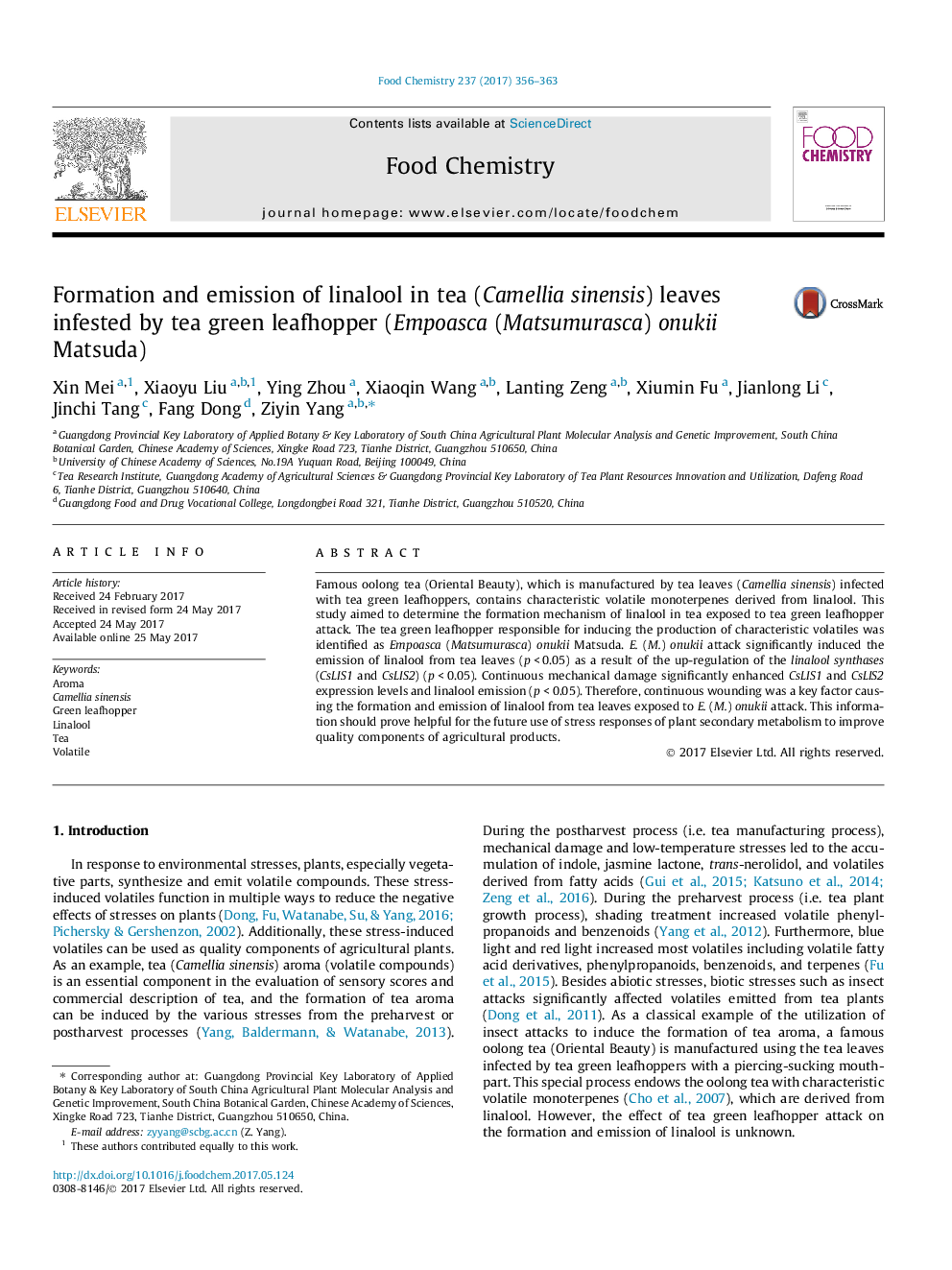| Article ID | Journal | Published Year | Pages | File Type |
|---|---|---|---|---|
| 5132732 | Food Chemistry | 2017 | 8 Pages |
â¢Tea green leafhopper attack increased emission of linalool from tea leaves.â¢Tea green leafhopper attack increased linalool synthase expressions.â¢Linalool synthases produced (S)-linalool from geraniol diphosphate.â¢Continuous wounding was the key factor for insect induced emission of linalool.
Famous oolong tea (Oriental Beauty), which is manufactured by tea leaves (Camellia sinensis) infected with tea green leafhoppers, contains characteristic volatile monoterpenes derived from linalool. This study aimed to determine the formation mechanism of linalool in tea exposed to tea green leafhopper attack. The tea green leafhopper responsible for inducing the production of characteristic volatiles was identified as Empoasca (Matsumurasca) onukii Matsuda. E. (M.) onukii attack significantly induced the emission of linalool from tea leaves (p < 0.05) as a result of the up-regulation of the linalool synthases (CsLIS1 and CsLIS2) (p < 0.05). Continuous mechanical damage significantly enhanced CsLIS1 and CsLIS2 expression levels and linalool emission (p < 0.05). Therefore, continuous wounding was a key factor causing the formation and emission of linalool from tea leaves exposed to E. (M.) onukii attack. This information should prove helpful for the future use of stress responses of plant secondary metabolism to improve quality components of agricultural products.
